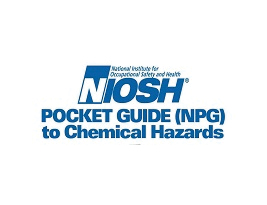Xylene

Overview
CAS No. 1330-20-7
Xylene (C8H10) is a colorless, flammable liquid with a sweet odor. Exposure to xylene can irritate the eyes, nose, skin, and throat. Xylene can also cause headaches, dizziness, confusion, loss of muscle coordination, and in high doses, death. Workers may be harmed from exposure to xylene. The level of exposure depends upon the dose, duration, and work being done.
Xylene is used in many industries. It’s used in the petroleum and wood processing industries. Some examples of workers at risk of being exposed to xylene include the following:
- Painters and furniture refinishers who use paint thinners, solvents, lacquers and paint removers
- Biomedical laboratory workers who use it as a solvent to fix tissue specimens and rinse stains
- Workers involved in distillation and purification of xylene
- Workers employed in industries who use xylene as a raw material
- Gas station and automobile garage workers through exposure to petroleum products
NIOSH recommends that employers use Hierarchy of Controls to prevent injuries. If you work in an industry that uses xylene, please read chemical labels and the accompanying Safety Data Sheets for hazard information. Visit NIOSH’s page on Managing Chemical Safety in the Workplace to learn more about controlling chemical workplace exposures.
The following resources provide information about occupational exposure to xylene. Useful search terms for xylene include “meta-xylene,” “m-xylene,” “o-xylene,” “p-xylene,” and “xylidine.”
NIOSH Chemical Resources
Related NIOSH Resources
- NIOSHTIC-2 search results for xylene—NIOSHTIC-2 is a searchable database of worker safety and health publications, documents, grant reports, and journal articles supported in whole or in part by NIOSH.
- Volatile Organic CPDS (Screening) (No. 2549)—Sampling and measurement from NMAM, 4th ed.
- Hydrocarbons, Aromatic (No. 1501)—Sampling and measurement from NMAM, 4th ed.
- NIOSH Worker Health Study Summaries—NIOSH conducts research to prevent illnesses and injuries in the workplace. The NIOSH Worker Notification Program notifies workers and other stakeholders about the findings of these research studies.
Selected Publications
- Immediately Dangerous to Life or Health (IDLH) Value Profile: Xylene (m-, o-, p isomers)–NIOSH reviews relevant scientific data and researches methods for developing IDLH values.
- Preventing Hearing Loss Caused by Chemical (Ototoxicity) and Noise Exposure–Safety and Health Information Bulletin, DHHS, 2018-124.
Related Resources
- ATSDR Toxicological Profile for Xylene
- ATSDR Medical Management Guidelines (MMGs): Xylene
- ATSDR – ToxFAQs: Xylenes
- EPA Chemistry Dashboard: Xylene
- EPA Air Toxics: Xylenes
- EPA Acute Exposure Guideline Levels: Xylene
- EPA Technical Fact Sheet Ground and Drinking Water: Xylenes
- EPA Integrated Risk Information System: Xylene
- OSHA Hazard Communication
- OSHA Guideline for Xylene
- NLM Hazardous Substance Data Bank: Xylenes
- NLM Haz-Map: Xylene
- NLM Household Products Database: Xylene
- New Jersey Hazardous Substance Fact Sheets: Xylene
International Resources
- m-Xylene, International Chemical Safety Card, ILO
- o-Xylene, International Chemical Safety Card, ILO
- p-Xylene, International Chemical Safety Card, ILO
- Canadian Centre for Occupational Health and Safety: Xylene
- European Chemicals Agency (ECHA): Xylene
- Gestis Substance Database
- IPCS INCHEM: Xylenes
- IPCS Poisons Information Monograph 565: Xylene
- OECD Global Portal to Information on Chemical Substances



